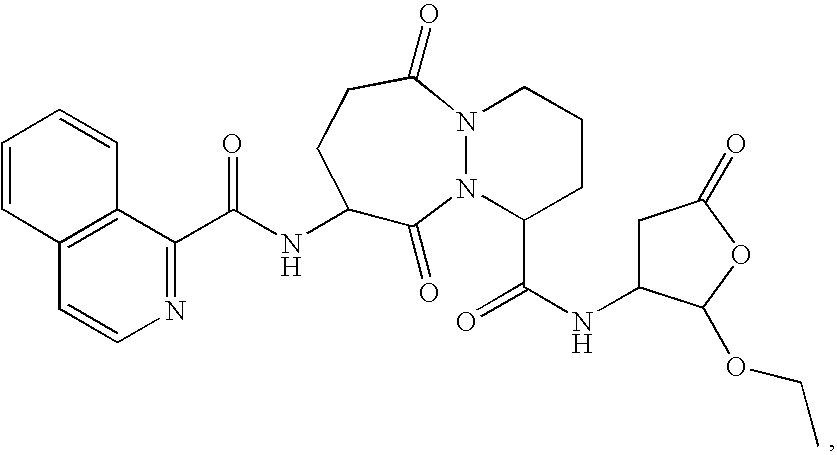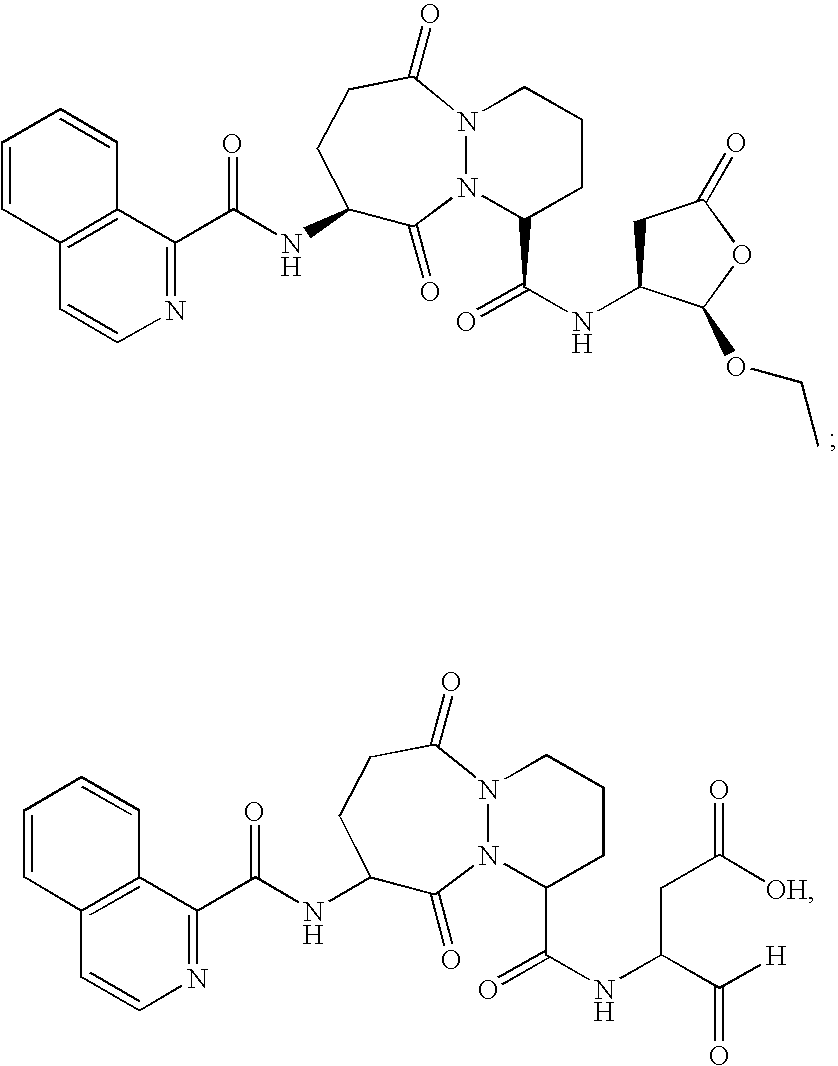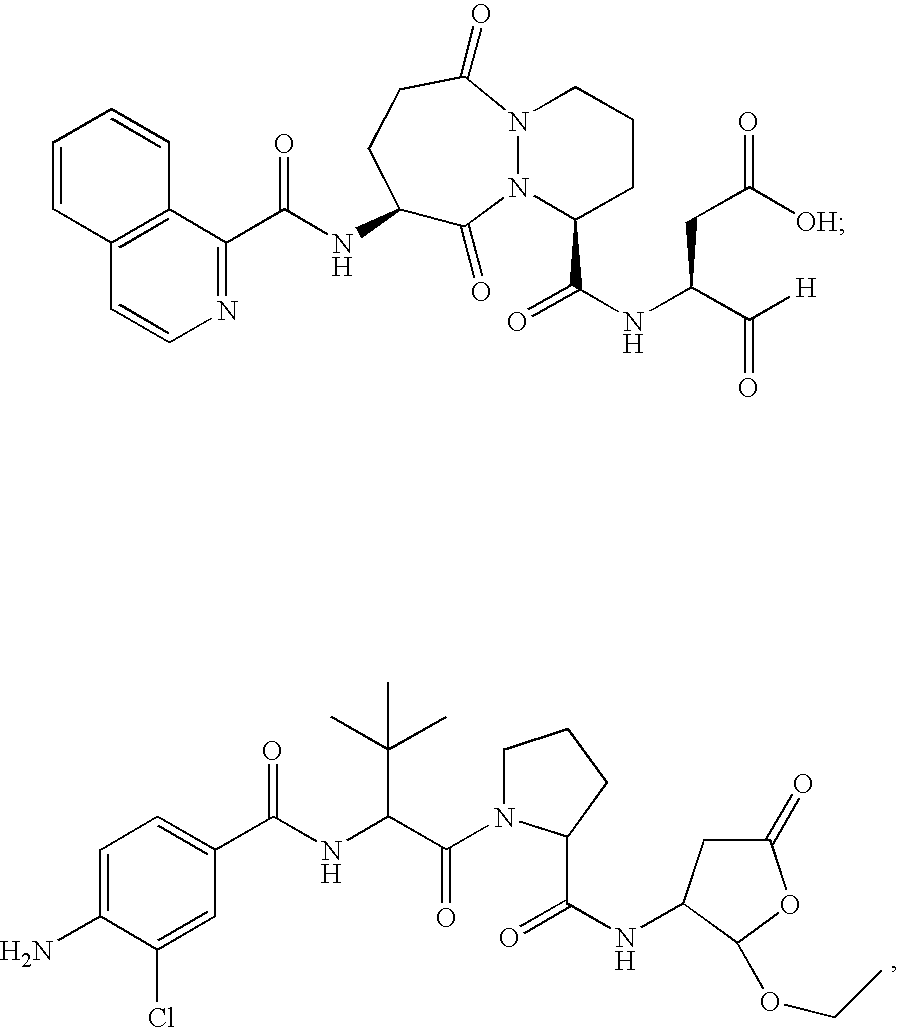Treating infectious diseases using ice inhibitors
- Summary
- Abstract
- Description
- Claims
- Application Information
AI Technical Summary
Benefits of technology
Problems solved by technology
Method used
Image
Examples
example 1
Animal Infection
[0094] Eight week old female B6 mice (The Jackson Laboratory, Bar Harbor, Me.) were used in these experiments. The left cornea of each anesthetized mouse was scarified with three parallel 1 mm incisions using a sterile 25⅝ gauge needle under a stereoscopic microscope. Scarified corneas were challenged topically with 1.0×106 CFU / μl of P. aeruginosa (ATCC strain 19660 or clinical isolate-1025 or a ciprofloxacin resistant 19660 strain in a 5 μl dose as described before (Kwon and Hazlett, 1997). Eyes were examined macroscopically at 1 day post-infection (p.i.) and at times described below to ensure that all mice were similarly infected and to monitor the course of disease. All animals were treated humanely and in full compliance with the Association for Research in Vision and Ophthalmology resolution on usage and treatment of animals in research.
example 2
Bacterial Strains
[0095]P. aeruginosa strain 19660 was used as a standard laboratory strain and produces reproducible corneal pathology in the B6 mouse model (kernacki et al., 2000; Rudner et al., 2000). P. aeruginosa strain 1025 (KEI-1025) was isolated in 1999 from a human microbial keratitis case at the Kresge Eye Institute, Detroit, Mich. The laboratory-derived ciprofloxacin-resistant mutant was developed by serially passaging the wild-type P. aeruginosa strain 19660 on ciprofloxacin-containing Luria-Bertani (LB) broth to obtain ciprofloxacin resistance (Sanchez et al., 2002). The ciprofloxacin-resistant P. aeruginosa strain when compared with the parent strain exhibited a 100-fold increase in the minimum inhibitory concentration (MIC) of ciprofloxacin (0.25 mg / ml vs. 25 mg / ml) required for in vitro killing of the bacteria. The virulence of the ciprofloxacin-resistant (P. aeruginosa-19660) mutant was decreased compared to the parent strain during the in vitro generation of this ...
example 3
ICE Inhibitor Formulations
[0096] The ICE inhibitor used in these experiments displays potent inhibition of ICE (Ki=0.8 nM) and selectivity >100-fold vs. other non-ICE caspases. Four coded blinded formulations of vehicle (PBS) with or without ICE inhibitor (300 μM) were studied, for subconjunctival and topical administration. All formulations were found to be non-toxic to the eye in otherwise untreated mice and had no direct (in vitro) ability to kill bacteria.
PUM
| Property | Measurement | Unit |
|---|---|---|
| Antimicrobial properties | aaaaa | aaaaa |
| Stereoisomer | aaaaa | aaaaa |
Abstract
Description
Claims
Application Information
 Login to View More
Login to View More - R&D
- Intellectual Property
- Life Sciences
- Materials
- Tech Scout
- Unparalleled Data Quality
- Higher Quality Content
- 60% Fewer Hallucinations
Browse by: Latest US Patents, China's latest patents, Technical Efficacy Thesaurus, Application Domain, Technology Topic, Popular Technical Reports.
© 2025 PatSnap. All rights reserved.Legal|Privacy policy|Modern Slavery Act Transparency Statement|Sitemap|About US| Contact US: help@patsnap.com



